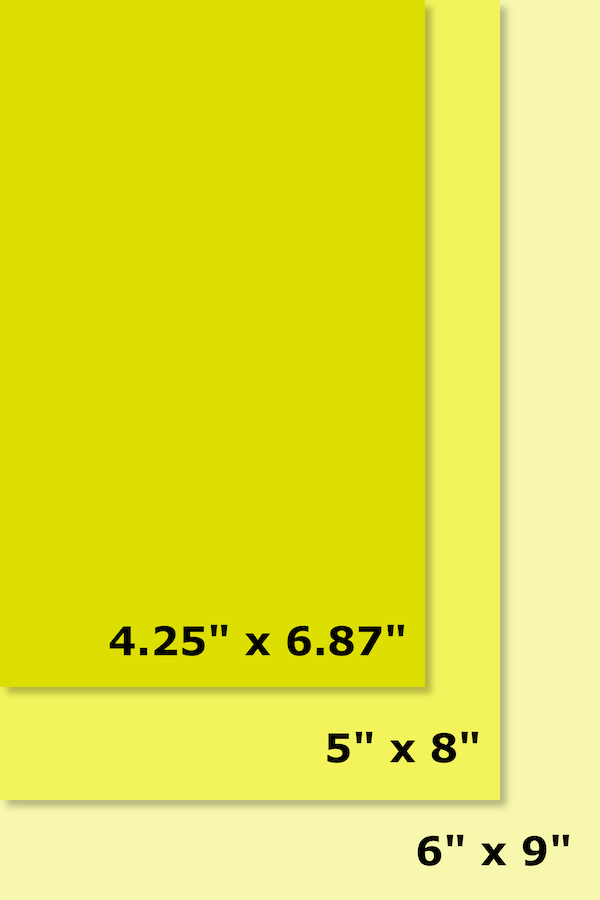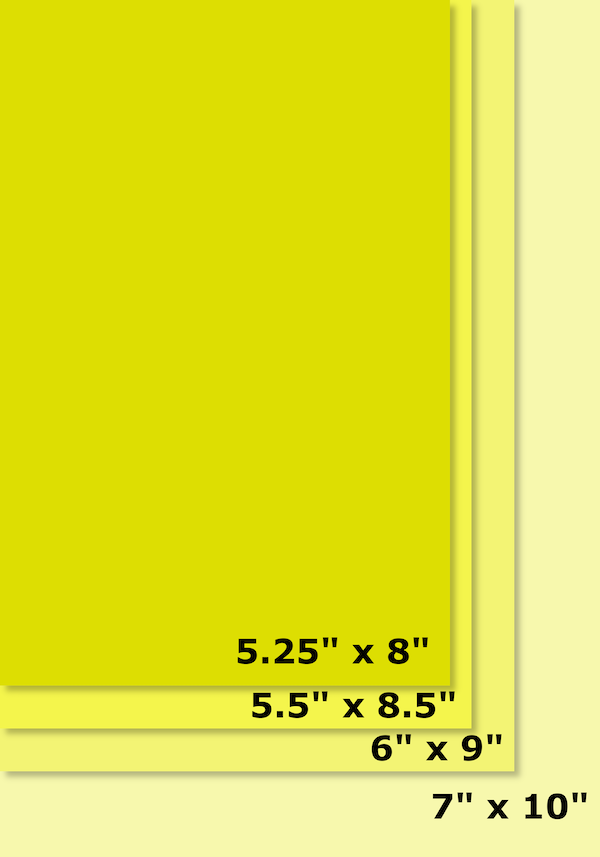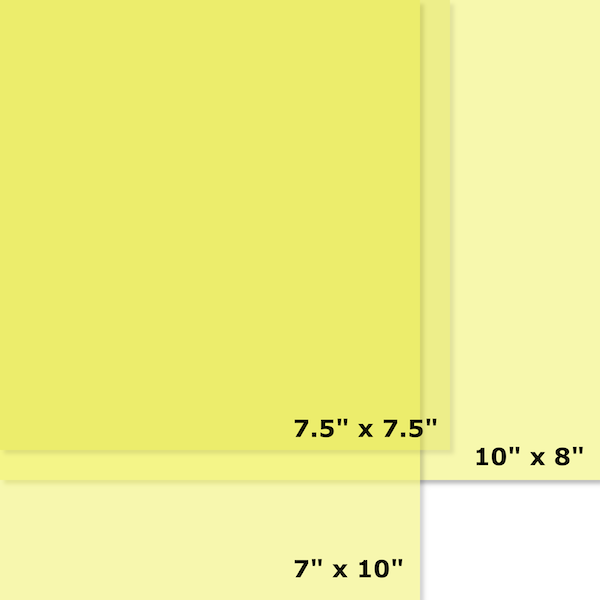You’re strolling through your local bookstore, perusing the shelves for that hard-to-find book you’ve been searching for, and your aesthetic sensibilities are offended by the dramatically different book sizes, also known as trim sizes, before you. Believe it or not, there is a system for those sizes and historical reasons for some of them.
What drives different books sizes? The simplest answer is money. Hardcover and other large books cost more to print and carry a higher price. Many (though not all) debut and literary authors see their books go straight to paperback because the publisher isn’t willing to take that kind of risk. As Edward Wyatt of The New York Times said, “Even critically acclaimed literary novels often have a short shelf life in hardcover, with one-half to three-quarters of the books shipped to stores often being returned to the publisher, unsold.”
If you see a book in hardcover, you know the publisher has faith in the book selling well. Only after a good hardcover run will these books be released in paperback, reaching a new audience.
A Brief History of Book Sizes
This history of the printed page goes back nearly as long as we’ve had the written word. For the sake of brevity, let’s look back to 1455 and the Gutenberg Bible. This masterpiece was printed as a folio, meaning a single large piece of paper folded once. Each page measures 12″ by 17.5″, with four pages printed on each large piece of paper. There were no standard sizes in this period, however, and since each little publisher played by their own rules, not all folios were the same size. Don’t believe me? Check the rather exhaustive list Harrington Rare Books put together.
These folios were rather large books, often illuminated, and only the very wealthy could own them. How do you sell more books? Make them smaller and cheaper. Take that folio size and fold it in half, printing eight pages on each paper. Now you have a quarto with each page measuring roughly 9″ by 12″. Fold that one more time and you have an octavo. At 6″ by 9″, the octavo is a size that has become commonplace on our bookshelves today.
But it’s far from the only size out there.
Fiction Book Sizes
Being the biggest market in books, fiction also has the widest range of sizes. Here are the standard sizes.

Hardcover books are mostly 6″ x 9″. Sound familiar? Yep, it’s that common octavo size, still in use today.
Trade Paperbacks have a few different sizes, ranging from 5″ by 8″ to 6″ x 9″. You might call these the “nice paperbacks” when you see them.
Mass Market Paperbacks are also known as pocket paperbacks and measure only 4.25″ by 6.87″. You can find these not only in bookstores, but in supermarkets and grocery stores.
Nonfiction and Memoir Book Sizes
Moving from fiction to nonfiction, you’ll see a lot of overlap in sizes. However, the mass market paperback size is exclusively the territory of fiction. On the other end, some nonfiction books have even larger sizes than fiction.

Paperback memoirs can be as small as 5.25″ by 8″. Other nonfiction and memoirs can be 5.5″ x 8.5″, and 6″ by 9″.
Hardcover fiction shares the 6″ by 9″ octavo size with fiction, but there’s also a 7″ x 10″ size out there, though not terribly often.
Children’s Book Sizes
Children’s books are a different thing entirely, catering to younger eyes and fumbling fingers. So these books tend to be big and aren’t all taller than they are wide. The three standard sizes are 7.5″ by 7.5″, 7″ by 10″, and 10″ by 8″. Again, these are only the standard sizes, though you can certainly find books that fall outside of these.

Other Book Sizes
Some books, like textbooks, tend to run large. Standard sizes here are the old octavo 6″ by 9″, 7″ by 10″, and 8.5″ by 11″. Graphic novels mostly come in 6.625″ by 10.25″, the same as comic books, though hardcovers add some extra size while not increasing the actual page size. Then, of course, there are photography books, which basically pick any size they want and hold down coffee tables around the world because you want to see every detail in the images.
Really, any type of book can be just about any size. They can be miniature because a publisher wants a challenge or because Abraham Lincoln wanted Union soldiers to carry the Emancipation Proclamation in their pockets. Particularly for art and nature books, they can become so huge that they even require their own furniture. From massive collector’s editions to minuscule pocket guides, it’s what’s printed on the page that matters most.
Source : An In-Depth Guide to Book Sizes










